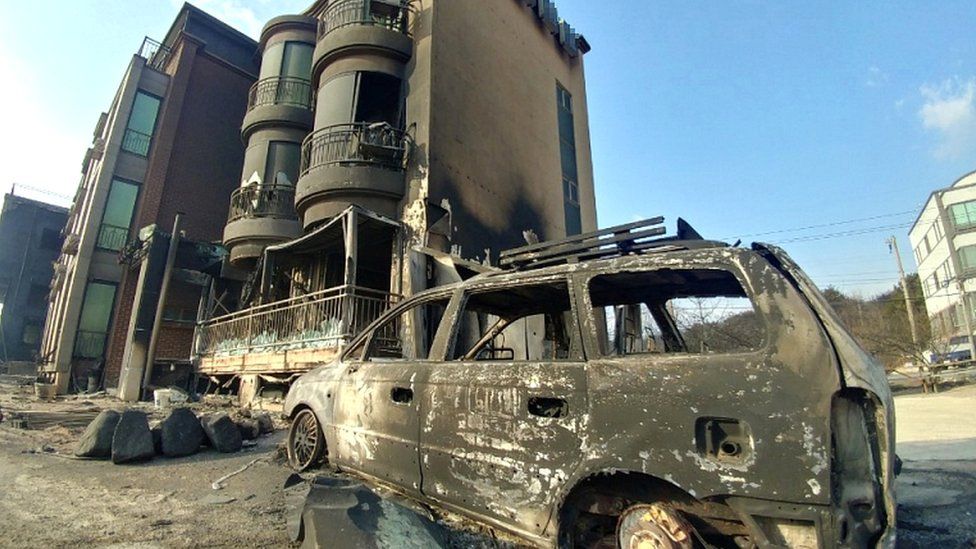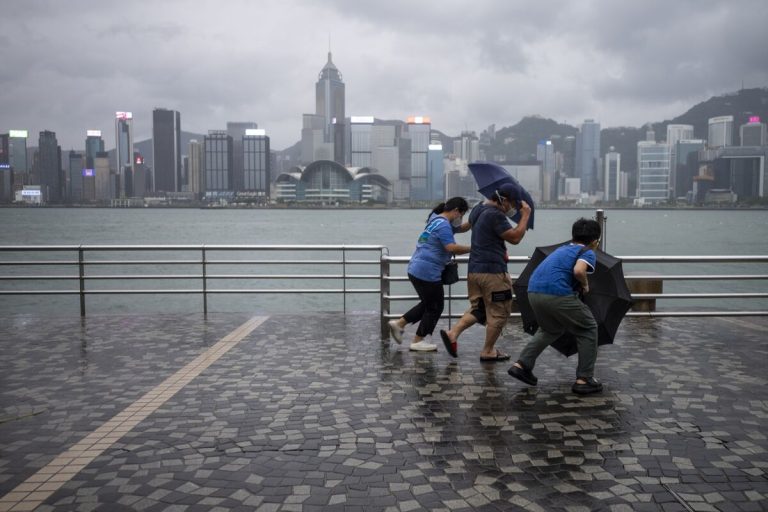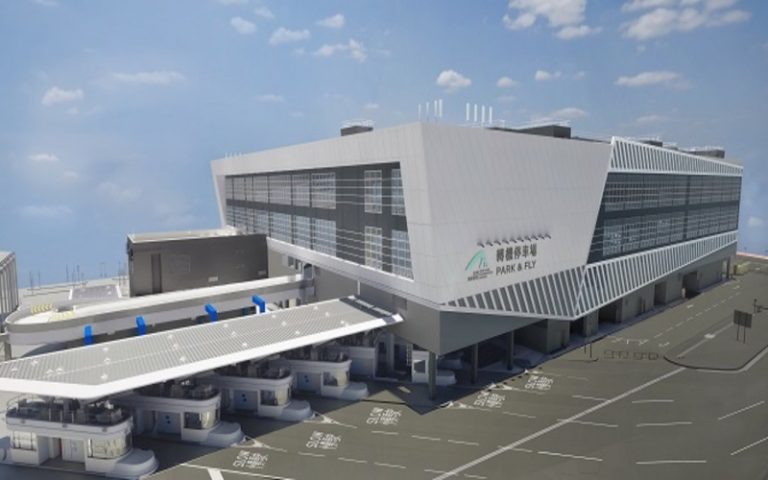
South Korea Wildfires: Deadly Blazes Ravage Southeast, Evacuating Thousands
Background
South Korea is currently grappling with one of the most devastating wildfire crises in its history. The fires, which began in Sancheong county on Friday, have rapidly spread to multiple counties in the south-east region, including Gyeongbuk, Uiseong, Andong, Cheongsong, Yeongyang, and Sancheong. The unprecedented nature of these fires has led to significant loss of life, property, and cultural heritage. Acting President Han Duck-soo has described the situation as “rewriting the record books for the worst wildfires in our nation’s history” (https://www.bbc.com/news/articles/c1lp365pd1go).
Key Insights
Human Toll and Evacuations
The wildfires have claimed at least 24 lives, with most victims being in their 60s and 70s. Additionally, 26 people have been injured, 12 of whom are in critical condition. The crisis has forced more than 23,000 people to evacuate their homes, seeking refuge in temporary shelters and other safe locations (https://www.bbc.com/news/articles/c1lp365pd1go).
Destruction of Cultural and Natural Heritage
The fires have not only taken a human toll but have also caused significant damage to cultural and natural heritage. A 1,300-year-old temple in Uiseong city, known as Gounsa, was completely destroyed. This temple, built in 618 AD, is one of the largest in the province and holds immense historical and cultural significance. A 68-year-old monk expressed his devastation, stating, “We will do our best to restore the function of the temple” (https://www.bbc.com/news/articles/c1lp365pd1go).
Furthermore, about 17,000 hectares (42,000 acres) of forest have been destroyed, making these fires the third largest in South Korea’s history in terms of area. The destruction of a Buddhist architectural structure deemed a national treasure from the Joseon Dynasty (1392-1910) has added to the cultural loss (https://www.bbc.com/news/articles/c1lp365pd1go).
Firefighting Efforts and Challenges
The national fire agency has raised the crisis to the highest fire response level, reflecting the severity of the situation. Thousands of firefighters and about 5,000 military personnel have been deployed to contain the flames, with additional support from US military helicopters stationed in Korea. Despite these efforts, strong and dry winds continue to hamper firefighting and rescue operations (https://www.bbc.com/news/articles/c1lp365pd1go).
On Wednesday, a firefighting helicopter crashed in the mountains of Uiseong, resulting in the death of the pilot. The cause of the crash is under investigation. Acting President Han Duck-soo has emphasized the challenges posed by the strong winds, stating, “We were desperately hoping for rain today or tomorrow to help extinguish the flames.” However, the Korea Meteorological Administration has forecast only a small amount of rain (five to 10mm) for Thursday, with no significant precipitation expected in the near future (https://www.bbc.com/news/articles/c1lp365pd1go).
Personal Accounts and Community Impact
The impact of the wildfires on local communities has been profound. One resident of a village in Andong described the complete destruction of their home, saying, “Our house has completely burned down. It was almost completely collapsed.” In another part of Andong, people sheltering at an elementary school were forced to leave quickly as the fire spread rapidly due to gusty winds (https://www.bbc.com/news/articles/c1lp365pd1go).
A 30-year-old man living in Uiseong shared the devastating impact on the elderly population: “Both the upstairs and next door houses were burned down. This area is full of grandparents. They have lived here their whole lives, and when their houses burn down, they have nowhere to go.” The emotional and physical toll on these communities is evident, with many residents describing the scene as “like the apocalypse” (https://www.bbc.com/news/articles/c1lp365pd1go).
Conclusion
The wildfires in South Korea’s south-east region represent a crisis of unprecedented proportions, with significant human, cultural, and environmental impacts. The loss of life and the destruction of historical and natural heritage underscore the severity of the situation. Despite the tireless efforts of firefighters and military personnel, strong winds and a lack of rainfall continue to pose significant challenges to containment efforts.
The government’s commitment to strengthening enforcement against illegal burning and cracking down on individual carelessness is a crucial step in preventing future wildfires. As the nation continues to grapple with this crisis, the resilience and solidarity of the affected communities will be essential in the recovery process. The international community’s support and assistance will also play a vital role in helping South Korea overcome this devastating disaster (https://www.bbc.com/news/articles/c1lp365pd1go).












